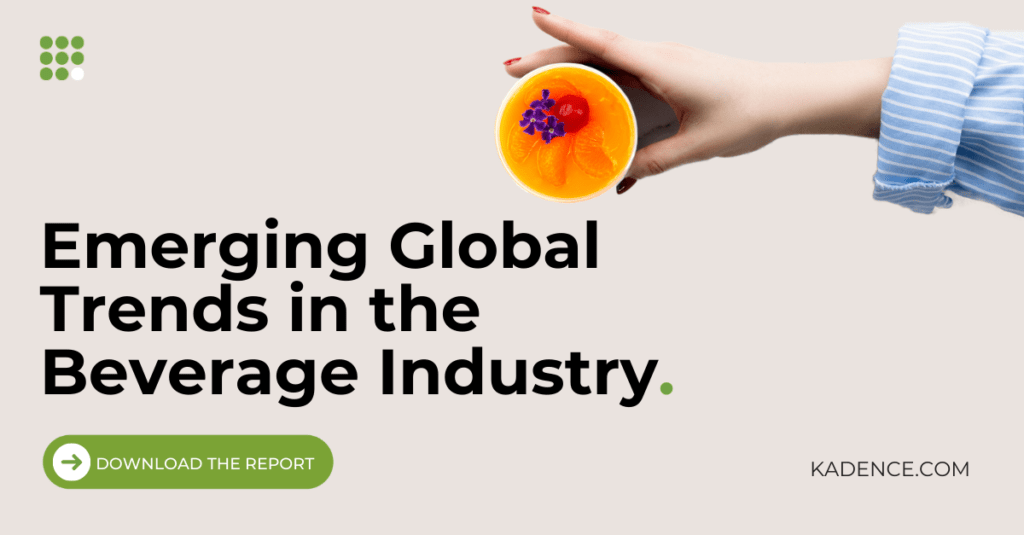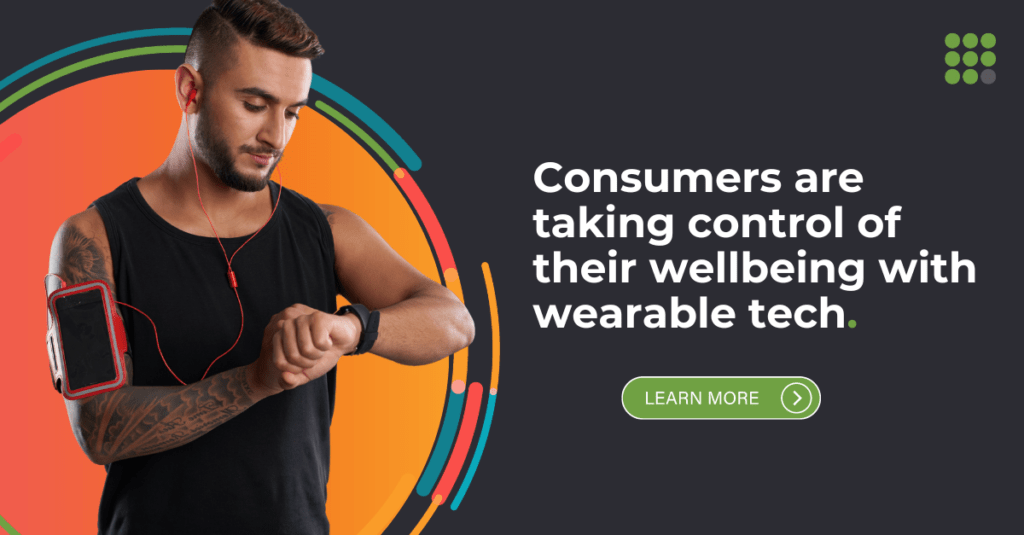Today, businesses are tasked not just with generating profits but with doing so responsibly. One of the most pressing challenges is the staggering amount of food that goes to waste yearly, a symptom of inefficiencies in the food supply chain and consumer habits. This waste is not just a lost economic opportunity but a significant contributor to environmental degradation, from wasted water and energy to greenhouse gas emissions.
Enter the concept of upcycled foods: an innovative approach that transforms would-be wasted food ingredients into value-added products. These aren’t just stop-gap measures or charity-driven initiatives; they are full-fledged business opportunities that, when executed effectively, can marry profitability with sustainability.
Brands that are agile, forward-thinking, and willing to adapt will find that upcycling not only addresses a global problem but resonates deeply with today’s conscious consumer.
The Genesis of Upcycled Foods
Historically, resourceful communities worldwide have always found ways to repurpose leftovers or food scraps, be it through creating broths, composts, or feeding livestock. However, as global food production and consumption patterns changed and as waste began to pile up at an unprecedented scale, a more systematic and commercial approach to these age-old methods began to take shape.
The initial thrust came from grassroots movements and small-scale entrepreneurs who saw potential in what many dismissed as ‘waste’. They recognised that much of what was being discarded was not just edible but nutritious and flavorful. Ugly fruits and vegetables, spent grains from beer production, or pulp from juiced fruits were all untapped potential ingredients. By reprocessing and reimagining these ingredients, early innovators created products that were not only sustainable but also added a unique selling proposition in an increasingly crowded food market.
Thus, the upcycled food movement wasn’t born solely from a need to address waste but from an opportunity to differentiate products meaningfully. It’s a testament to the power of innovative thinking and the ever-evolving dynamics of the food industry.
The Scale of the Problem: Food Waste by the Numbers
To truly grasp the magnitude of the upcycled food movement’s significance, one must first understand the staggering scale of food waste globally.
According to the United Nations, roughly one-third of the food produced in the world for human consumption every year — approximately 1.3 billion tonnes — gets lost or wasted. This lost food has a value of nearly US$990 billion. But the problem isn’t just economic; it’s profoundly environmental and social.
Environmental Impacts:
Greenhouse Gas Emissions: Decomposing organic waste in landfills produces methane, a greenhouse gas that is 25 times more potent than carbon dioxide in trapping heat in the atmosphere. If global food waste were a country, it would rank third in greenhouse gas emissions, following only the US and China.
Wasted Resources: For every piece of food wasted, there’s a string of wasted resources—water, energy, and land. For instance, the water used annually to produce food that ends up as waste would be equivalent to the entire annual flow of the Volga River, Europe’s largest river.
Loss of Biodiversity: Increasing agricultural lands to meet global food demand often results in deforestation and habitat loss. When a significant portion of that produce is wasted, it exacerbates the strain on ecosystems and biodiversity.
Economic Impacts:
Lost Revenue: As previously mentioned, the value of global food wastage amounts to nearly US$990 billion. For producers, retailers, and consumers alike, this represents a tremendous economic inefficiency and lost revenue.
Increased Production Costs: Inefficient utilisation of produce means that more resources are spent producing food that never reaches our plates. This not only drives up production costs but can also inflate market prices.
Social Impacts:
Food Insecurity: In a world where nearly 9% of the global population is undernourished, the juxtaposition of massive food waste is a grim paradox. Recovering just half the food currently wasted or lost could feed the world’s hungry several times over.
Cultural Implications: In many cultures, food holds significant symbolic value, representing hospitality, prosperity, or gratitude. The act of wasting food can sometimes contradict these deeply held values, leading to a cultural dissonance.
Understanding these figures and impacts underscores the urgency and the opportunity. Addressing food waste through methods like upcycling isn’t just a potential business trend; it’s a pressing global imperative. The upcycled food movement stands at the intersection of environmental responsibility, economic opportunity, and social equity. It’s a solution that looks forward by looking back—taking age-old principles of frugality and resourcefulness and applying them on a global scale.
Upcycling in Action: Case Studies
The concept of upcycled foods has moved well beyond theory. Several companies are already making waves in the market with their upcycled products, turning challenges into opportunities and redefining the food industry’s landscape. Let’s delve into a few standout examples:
ReGrained: This innovative company saw potential in the spent grains, a by-product of the beer brewing process. Recognising that these grains are rich in fibre and protein, ReGrained developed a line of granola bars and snack puffs. According to a report by Sustainable Brands, their sales have grown by over 250%. Moreover, ReGrained has successfully diverted several tons of grain from waste, effectively reducing the carbon footprint associated with grain disposal.
Imperfect Foods: Starting as a subscription box service delivering “ugly” fruits and vegetables to consumers, Imperfect Foods has expanded into a full-fledged grocery service, with offerings ranging from grains to dairy. As per a Forbes article, the company has rescued over 139 million pounds of food from going to waste since its inception. This effort reduces environmental impacts and offers consumers products at a lower cost than standard groceries, making sustainable choices more accessible.
Toast Ale: Based in the UK, this company produces beer using surplus bread that would otherwise be wasted. According to their sustainability report, Toast Ale has upcycled more than 2 million slices of bread since their launch. They’ve not only seen a warm reception from environmentally-conscious beer enthusiasts but have also sparked interest in mainstream consumers looking for unique flavors and stories behind their beverages.
Each of these companies exemplifies the multi-fold benefits of upcycled foods: environmental responsibility, economic opportunity, and a resonance with an evolving consumer mindset. Their success stories serve as a roadmap and inspiration for brands looking to pivot towards a more sustainable future.
The Consumer Perspective
The modern consumer is markedly different from those of previous generations. Empowered by the digital age’s information accessibility, they’re more informed, more discerning, and more aligned with broader global issues than ever before.
This evolution in consumer consciousness is reshaping market dynamics, with sustainability and ethics taking centre stage.
Willingness to Pay More: According to a Nielsen Global Corporate Sustainability Report survey, 73% of global consumers say they would definitely or probably change their consumption habits to reduce their environmental impact. Additionally, 66% of global respondents indicate they’re willing to pay more for sustainable goods, a figure that rises to 73% amongst millennials.
Preference for Transparent Brands: A study from Label Insight revealed that 94% of consumers are likely to be loyal to a brand that offers complete transparency, and 73% are willing to pay more for a product that promises total transparency. This underscores the importance of adopting sustainable practices like upcycling and communicating them effectively to consumers.
Resonance with Upcycling: A recent industry report indicated that 58% of consumers in major markets look for products with environmentally friendly packaging or reduced waste claims. This sentiment aligns seamlessly with the ethos of upcycled foods, positioning them favourably in the minds of these conscious consumers.
The intersection of market demand with global responsibility presents an attractive proposition. Brands that align with these consumer sentiments, powered by authentic stories and impactful initiatives like upcycling, are poised to command both loyalty and premiums in the market.
Opportunities for Brands
The rise of upcycled foods isn’t just a fleeting trend; it indicates a broader shift in consumer values and market dynamics. For brands, this presents both challenges and a vast array of opportunities. By understanding the landscape and strategically navigating it, companies can reap significant benefits, both tangible and intangible.
Tapping into the Upcycled Food Trend:
- Product Development: Brands can begin by assessing their supply chains to identify potential waste streams that can be transformed into new products. Collaborating with R&D teams, food scientists, and chefs can lead to innovative product ideas that stand out in the market.
- Partnerships: Engaging with startups or existing brands in the upcycling space can allow for faster market entry. These collaborations can be joint ventures, product collaborations, or even acquisitions.
Considerations When Launching an Upcycled Product:
- Sourcing: Consistent sourcing of waste materials is crucial. This requires robust partnerships with suppliers and a deep understanding of the waste generation cycle.
- Marketing: Effective storytelling is at the heart of upcycled products. Brands must clearly and compellingly communicate the product’s origin, impact, and broader value proposition.
- Transparency: Given the modern consumer’s demand for brand transparency, companies must be open about their upcycling processes, the authenticity of their claims, and the overall sustainability impact of their products.
- Regulation & Compliance: As upcycling gains traction, regulatory frameworks may evolve. Brands should proactively understand and adhere to any standards or guidelines pertinent to upcycled foods.
Potential Economic Benefits:
- Cost Savings: Repurposing waste can lead to substantial cost savings in raw materials. By reducing waste, brands can also save on disposal costs and potential penalties or fees associated with waste generation.
- New Market Segment: The sustainability-driven consumer segment is growing. Brands that cater to this audience can tap into a premium market with higher margins and greater brand loyalty.
- Enhanced Brand Image: Associating with sustainability and upcycling can significantly enhance a brand’s image, leading to broader market appeal, increased press coverage, and stronger stakeholder relationships.
- Risk Mitigation: With global challenges such as climate change, resource scarcity, and regulatory shifts, brands that adopt sustainable practices are better positioned to mitigate supply chain disruptions and adapt to changing regulatory landscapes.
Upcycling represents a convergence of economic rationale and ethical responsibility. Brands that recognise and act upon this convergence stand to gain not just immediate financial benefits but also long-term brand equity, consumer loyalty, and market leadership.
Challenges and Considerations
While promising, the journey into upcycled foods isn’t devoid of challenges. As brands venture into this evolving landscape, understanding potential pitfalls and being equipped to navigate them will be crucial for sustained success.
Regulatory Hurdles:
- The world of upcycled foods is relatively nascent, and regulatory frameworks are still catching up. Brands may face ambiguities in labelling requirements, safety standards, and certifications specific to upcycled products. This evolving regulatory environment can pose challenges regarding compliance and market access.
Sourcing Consistency:
- One of the inherent challenges with upcycling is that it relies on waste streams, which may not always be consistent in volume, quality, or availability. Ensuring a steady supply of the “waste” ingredient can be tricky, and any inconsistency can impact production schedules and product quality.
Consumer Skepticism:
- While many consumers are receptive to the idea of upcycled foods, there’s a segment that may harbour skepticism. Questions about the safety, quality, and taste of upcycled products can hinder adoption. Building trust and credibility is paramount, which can take time and sustained engagement.
Production & Quality Control:
- Transforming waste into a high-quality product can require innovative technologies, specialised equipment, and rigorous quality control measures. Ensuring that upcycled products meet the same standards as traditional products is essential but can also be resource-intensive.
Market Education:
- As a relatively new concept, upcycled foods might necessitate market education efforts. Brands must invest in educating consumers, retailers, and even their teams about the benefits, safety, and value proposition of upcycled products.
While upcycling offers a plethora of opportunities, it also brings with it a unique set of challenges. Success will hinge on a brand’s ability to anticipate these challenges, respond proactively, and continuously evolve in tandem with the market.
Looking to the Future: Predictions and Potential
The upcycled food trend, still in its relative infancy, promises a trajectory that could redefine our relationship with food, waste, and sustainability. The momentum it has gained in recent years is just the beginning.
Trajectory of the Upcycled Food Trend:
- Upcycled foods have made significant inroads in niche markets and among conscious consumers. As awareness and appreciation for sustainability grow, it’s plausible that upcycled products will transition from niche to mainstream. With an increasing global focus on waste reduction and circular economies, upcycled foods will likely cement their place in the pantheon of sustainable solutions.
Role of Technology and Innovation:
- The upcycled food movement’s scalability largely hinges on technological advancements. Innovations in food processing, preservation, and packaging are pivotal. Biotechnology might play a role in enhancing the nutritional profile of upcycled ingredients. Digital platforms can facilitate direct connections between waste generators and upcycling brands, streamlining sourcing and ensuring consistency.
Expansion Beyond Foods:
- The principles of upcycling aren’t confined to the realm of edibles. There’s significant potential for the trend to bleed into other industries. Upcycled beverages, utilising by-products from beverage production or imperfect ingredients, are already making a splash. Beyond this, the cosmetics and personal care industry presents a ripe opportunity. Ingredients that may not pass the aesthetic muster for food consumption can find their way into skincare products, where their nutritional benefits can be harnessed topically.
In the grand tapestry of the future, upcycled products have the potential to be more than just a footnote. They can symbolise humanity’s ability to adapt, innovate, and derive value from challenges, all while treading lightly on our planet.
Final Thoughts
When the ecological footprints of our choices become more palpable with each passing day, the urgency to rethink and reshape our consumption patterns has never been more evident. Food waste, a colossal environmental and ethical concern, stands as a testament to our collective inefficiencies and, perhaps, even apathy.
But herein lies an opportunity. As influential agents of change, brands wield power not just to modify consumer behaviours but to inspire them, mould perceptions and set the gold standards for sustainable practices. Upcycled foods are not just products; they are profound statements of intent, signalling a commitment to reimagine waste, derive value where none was seen, and tread a path that is as much about ethics as economics.
The future, as we envision it, will not be shaped merely by technology, policies, or economies. It will be shaped by values. Brands that champion the ethos of upcycling are not just capitalising on a trend; they are laying the foundation for a future where sustainability isn’t an option, but the norm. They embody the philosophy that true progress marries profitability with responsibility.
Get regular insights
Keep up to date with the latest insights from our research as well as all our company news in our free monthly newsletter.





 Senior Marketing Executive
Senior Marketing Executive Sales & Marketing
Sales & Marketing General Manager PR -Internal Communications & Government Affairs
General Manager PR -Internal Communications & Government Affairs Vital Strategies
Vital Strategies
 Customer Intelligence Director
Customer Intelligence Director